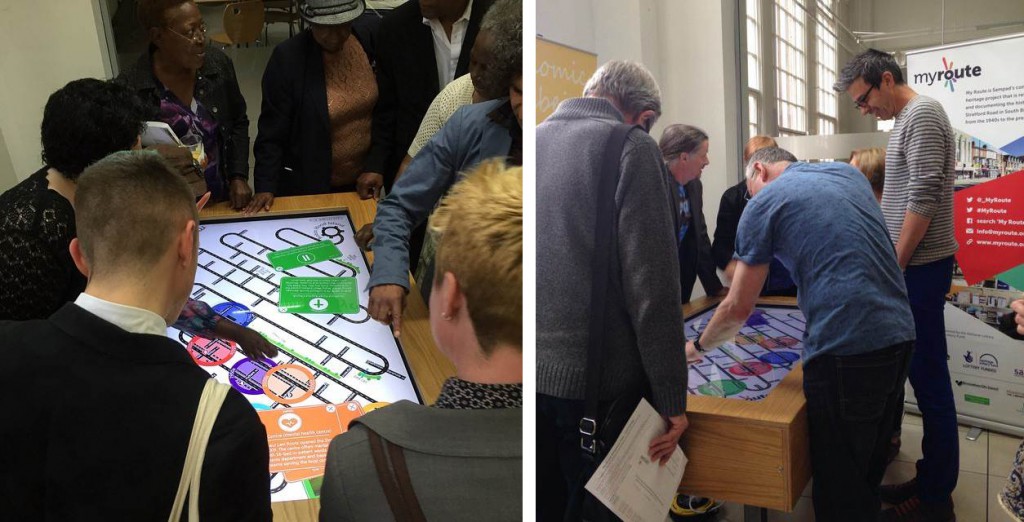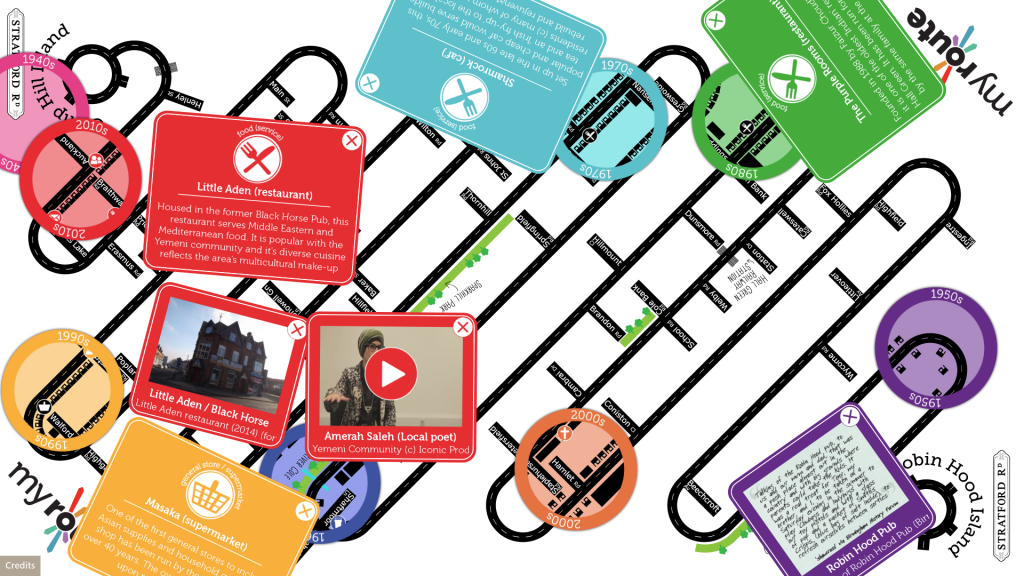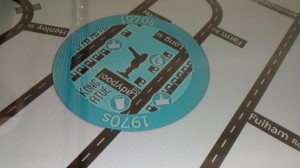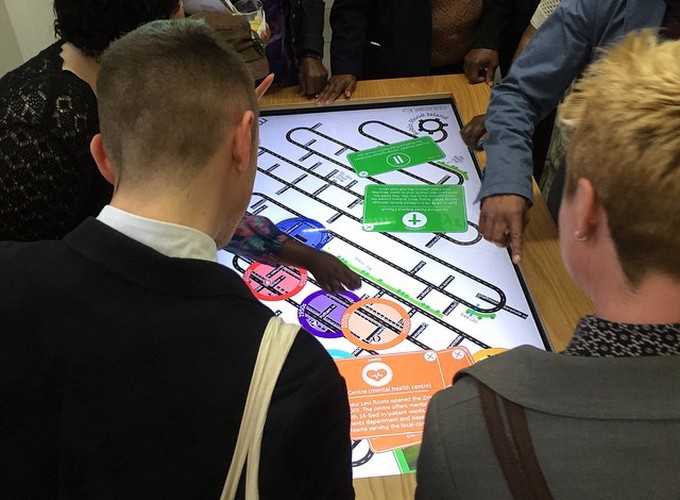As with much of Birmingham, it’s famous Stratford Road has seen radical change over the past 80 years. Sampad’s Heritage Lottery Funded MyRoute Project remit was to investigate and archive this heritage. Using interviews with residents and examining the changing use of buildings it is hoped that these histories can be captured for others to learn from and enjoy.

Groups gather around the touch table – sharing their own history of the Stratford Road.
The MyRoute project included a smorgasbord of activities – from Taxi Tours to Restaurant experiences, and from Augmented Reality to the publishing of a book. I played a small contribution to the project by building the large interactive touch-table that allowed locals and visitors to explore the history of the area in a shared, fun way. I collaborated on the development with Caroline Beavon and the team from SubstraktCaroline took care of the beautiful visuals (and had a big hand in the historical data) and Substrakt developed the corresponding MyRoute website.
Multi-Touch Table
The touch-table application was tightly correlated with the website. The website holds all the data relating to the history of Stratford road, however not all of this is ideal for viewing on a touchtable. So a curated subset has been selected and is presented on the table easily viewable by a small group.
Probably the most difficult decision during the design process was how best to represent a 4 mile long straight road on a 16 by 9 ‘Full HD’ screen. Most solutions involve allowing users to zoom into some portion of the map. However, this can prevent users simultaneously exploring different areas of the map and causes people to have to ‘wait their turn’ before they can view their area of interest. Ultimately, this gives a single user too much power – so rather than a collaborative experience it becomes a competitive one. The simple solution (simple ideas are often the best) was to coil the road around to fit on the table all at once. We experimented with a number of variations before deciding on the version we see below. The proof is definitely in the final results – users immediately took to the unique layout and had no problem finding locations they were after.

The lenses allow you to look back to different decades – pop-ups of video, audio, images or text.
Launch Event
The launch event was very well attended and it was incredible to see the touch table get a full workout from the crowds gathering around it. Users easily got to grips with it, often taking the classic first step is to ‘put themselves in the data’ – by looking for the when they live and work. It was delightful to see how the experience encouraged inter-generational discussion between children, parents and grand-parents as well as between different groups within the community. It really highlights one of the main benefits of large touch-tables: encouraging strangers to engage with each other.

Speeches before people headed off in taxi-tours along Stratford Rd
Here comes the science bit!
The table can be remotely administered thanks to a combination of VNC and dropbox – allowing new versions of the application to be rolled out without physically travelling to the table. The table emails on a daily basis to let us know of usage patterns and any other problems it encounters. Unfortunately, the WiFi performance at the installation locations was quite poor – however this was easily rectified by installing our own MiFi running on EE’s 4G network.
The touch table was originally installed in The Muath Centre, has moved on to Hall Green library and is expected to be included in the Library of Birmingham’s collection of applications in the coming months.
If you can’t get to experience the touch-table in person – the MyRoute website contains to be available after the project and can be explored here:

